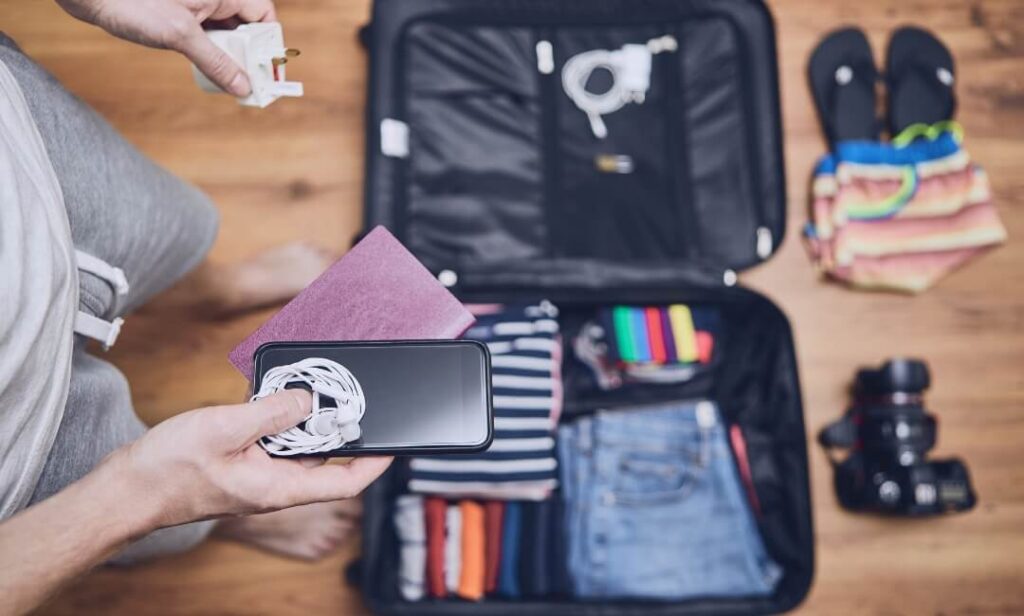We are all aware of how exhausting and hectic driving over long distances can be. Driving for long periods of time without taking breaks can actually have some setbacks, such as body aches, blood clots, fatigue, an increased risk of crashing due to a lack of concentration, and so on.
Whether you are driving solo, with family or friends, it is essential to take frequent breaks in order to have a safe journey . In this guide, we will discuss the important factors of taking breaks, how frequently you should take breaks when driving long distances, and how to prepare well for long road trips.
So, without wasting any more time, let’s get right into it!
Why Are Taking Breaks During Long Road Trips Important?

Breaks are essential for everyone during long road trips. From driver to passenger, everyone needs a break from sitting stiffly in the car seat for hours. Getting out of the car and moving your body a little will prevent you from falling asleep, especially if you are a driver.
As a passenger, you too need a break from driving. Sitting in a fixed position for hours is tedious, especially for expecting mothers and children. Taking a break and getting out of the car gives everyone the boost to continue the journey without losing their nerves.
Here is a list of benefits you can get when taking breaks:
- Maintains alertness: Frequent breaks on long road journeys allow you to rest well while you replenish. Now you are more alert than you were a few minutes before, have better concentration, and are less likely to dose off behind the wheel.
- Reduces fatigue: Allowing your mind and body to relax for some time can reduce fatigue and restore energy levels. Getting out of the stiff chair position even for 10 minutes can do wonders for you.
- Reduces body aches: Driving for long periods of time can cause stiffness in joints and muscles. This is a serious issue for people with surgeries, expecting mothers, and the elderly. Thus, stopping for a few minutes and stretching those aching parts can help you avoid misery on the road.
- Allows time for snacks: A break while driving for prolonged hours can allow you to grab a quick meal or snack. Driving on an empty stomach can be distracting, and it even makes some people irritated. Taking a break allows you to fill up your tank with whatever you like and be all full and happy to drive.
- Allow your vehicle to take a break: Just as we humans need a break from working all the time, vehicles require breaks too. Stopping every once in a while allows your car engine to rest and cool down, preventing engine overheating. You can also utilize your break to check your vehicle’s tire pressure and gas level.
Taking frequent breaks overall will help reduce the risks of accidents, as you will be more alert, energetic, and focused.
What Happens If You Don’t Take Breaks?

Taking breaks is necessary for the vehicle, driver, and passengers. Choosing to skip breaks can result in unsafe driving circumstances, increasing the risk of collisions and putting everyone on the road in danger. Taking regular breaks is crucial to preserving focus and guaranteeing a safe trip.
There are many risks associated with not taking frequent breaks, such as:
- Dosing off: There is an extremely high risk of you falling asleep behind the wheel when you decide not to take breaks on a long road trip.
- Lack of concentration: When your body has not been able to restore its energy levels or have the proper rest it needs, it will tend to lose concentration, making it harder for you to focus on driving.
- Stiffed body: You have an extreme chance of developing back and other bodily pains due to sitting in one position for prolonged hours. Thus, it is important to stop every once in a while to stretch and loosen joints.
- Blood clots: When sitting stationary for long periods of time, your legs may not receive proper blood circulation as they should. Lack of movement can form clots in veins.
- Dehydration and loss of energy: Choosing not to take breaks will not give you time to hydrate and have meals, which causes dehydration and loss of energy.
These points apply to everyone who is traveling in the vehicle, not just the driver. It’s just as important for everyone inside your car to take a break. Simply get out of the car, and fuel up on snacks and drinks before you restart the journey.
How Long Should You Drive Before Taking A Break?

As it is crucial to take breaks during long driving durations, it is also important to know when you should be taking those breaks. Taking breaks at longer intervals is also as dangerous as not taking any breaks at all.
It is important you know how to balance your breaks out. Travel experts recommend taking breaks for at least 15 minutes after every 2 hours of driving.
However, this timeline differs depending on who is driving. For example, if you are a senior citizen, a pregnant woman, someone with kids, or even someone who is new at driving on interstate highways, you will require more and longer breaks to keep up with the fatigue and stress of travel. For those who prefer not to drive long distances themselves, comparing Car Transport Quotes West Yorkshire can be a practical way to move vehicles safely and conveniently.
Here are some things you can do during your breaks:
- Stretch: Stretch around to loosen joints and avoid stiffness in muscles, especially if you are a senior citizen or expecting. Frequent body movement is a must as it helps in avoiding blood clots.
- Check vehicle levels: During your break, you must check if your vehicle has enough gas in the fuel tank and air in tires. This is necessary to avoid any mishaps on your journey.
- Use the restroom: Utilize this time to go and freshen up. This can also prevent you from stopping ahead in the middle of nowhere and interfering with your journey.
- Grab a snack: It is very crucial to have water, a meal, or a snack before you continue driving again. This will help keep your energy levels up and avoid fatigue. You will also feel less agitated and hydrated.
- Let the kids move around: If you are traveling with children, you already know how frustrating it can be to keep them still for so many hours. Often, kids start to get irritated when they are not able to move and play. During these breaks, allow kids to run around for a while in order to keep their bodies moving too and get rid of their boredom.
- Stock up on refreshments: Buy extra bottles of water or food for the rest of the journey. Having a bite every now and then will keep you in your high spirits.
- Switch seats: If you are driving with other people who know how to drive, ask them to switch seats with you until the next stop.
8 Essential Tips To Prepare For Long Road Trips

If you are planning on going on a road trip, we have some amazing tips that can help you prepare well. Following these tips will help you avoid the risks of unfortunate situations and ensure a safe journey. Check them out below and see for yourself which of the following are things you should do to minimize driving risks.
- Plan well: Before going on your road trip, make sure to plan your route well and schedule where you should be stopping for breaks. It is also better to start your journey early in the morning to avoid traffic and reach your destination on time.
- Check insurance: Check your vehicle’s insurance before leaving and make sure it is updated. In addition, make sure your medical insurance is good as it can come in handy if you get in any dangerous situation on the road.
- Carry maps or GPS: Ensure you have a map or GPS to help guide you and avoid getting lost in unknown areas.
- Carry necessities: Before starting your trip, make sure you have packed all your necessities, such as phone chargers, first aid kits, water or snacks, jumper cable, an extra tire in case of punctures, and so on.
- Pack caffeinated drinks: Take some coffee or energy drinks to help you stay awake and avoid drowsiness during your trip.
- Music or a working stereo: If you are traveling alone, you can download some music to listen to while driving or make sure your stereo is working to hear the radio. Engaging in these activities will allow you to be awake. Make sure you don’t choose music that is too loud to hear the outside noises or music that makes you drowsy.
- Emergency numbers: Have a list of government emergency numbers as they can come in handy in case of any emergency during your trip. Also, make sure to carry your personal emergency contact numbers if you need to call someone. Keep this list somewhere accessible, such as stick to the dashboard or in glove compartment. If you prefer not to drive, consider using car transport services to ensure your vehicle reaches your destination safely while you travel comfortably by other means.
- Check vehicle: Before leaving, make sure your vehicle’s gas is full and tire pressures are maintained.
Tips for a solo traveler

If you are planning a trip, try taking someone along to help switch driving duties or just in general. If this is not possible and you have to travel alone, then the tips below will help finish your journey.
- Examine your vehicle well before heading out on the road.
- Download music to listen to but make sure it is neither too noisy or too sleepy.
- Switch between your music and radio to avoid getting bored.
- Carry enough snacks, water, and caffeinated drinks to keep yourself hydrated and full.
- Tell someone before you leave. Make sure someone knows your destination and the route you are going to take.
- Carry emergency numbers (government and your closed ones you can contact in case of any mishap).
- Take breaks.
- Carry necessities and safety objects to avoid shady situations like a theft.
Related FAQs
How many miles can we drive a car continuously per day?
It is actually not recommended to drive continuously without any breaks, as it can have severe risks of exhaustion, fatal accidents, and potentially cause harm to everyone around you. Although the said amount to drive continuously is about 500 miles. However, it is crucial to stop in between and rest before you continue driving.
When driving long distances, how often should you stop?
Stopping and taking breaks during long distances is a great idea, as it can reduce many risks regarding your health or possible accidents. It is recommended to stop for 15 minutes after every 2 hours.
Taking frequent breaks can help regain energy and maintain concentration levels, as well as being able to focus better.
How do you drive long distances without getting tired?
The best way of driving long distances without getting tired is to take someone along with you on your trip who can help in taking turns to drive. This way you will not have to be driving regularly and will avoid exhaustion.
Other tips you can follow to avoid being tired are to take frequent breaks. Use this break to freshen up, stretch, and have a meal.
Does driving long distances damage your car?
Driving long distances may cause some amount of wear and tear to your vehicle’s engine, tires, and other moving parts. Driving for prolonged hours without stopping can cause your engine and tires to overheat.
Before leaving for road trips, make sure all your vehicle’s fluids are up to date and your vehicle is serviced.
What is a good speed for long-distance driving?
It is best to avoid speeding or rash driving whether you are driving in the city or on highways. The recommended speed for long-distance driving is 55-65 mph. Driving safely and at a recommended speed limit can help reduce the risks of accidents and damages.
Ensuring your own safety and the safety of others on the road is the number one rule of driving.
Conclusion
In short, the answer to your question, How frequently should you take breaks when driving long distances? is taking a break for 15 minutes every 2 hours.
Our cognitive abilities can be reduced over extended periods of driving, which could lower our awareness and reaction time. By allowing our bodies and minds to rest and recharge while taking regular breaks, it can help us drive more effectively overall. Drivers can significantly improve road safety and reduce the dangers related to fatigue by following the recommended break frequency.

